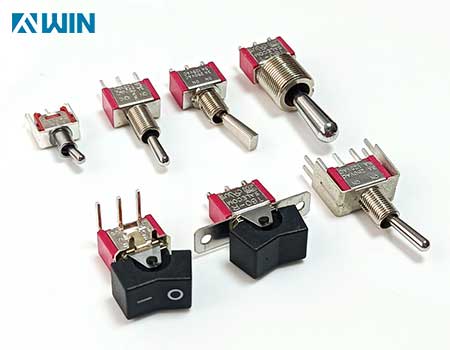Toggle switches are a fundamental component in synthesizers due to their simplicity, reliability, and versatility. These switches have earned their place in the world of electronic music production by offering tactile control and robust functionality. This article explores the reasons why toggle switches are widely used in synthesizers, examining their technical benefits, user-centric design, and role in creative music-making.

Toggle switches operate with a straightforward mechanism, making them highly reliable and durable. Synthesizers are complex electronic instruments, and incorporating components that can withstand frequent usage without failure is critical. Toggle switches are built to endure millions of cycles, ensuring longevity in both professional and DIY synthesizers. Their mechanical action provides a clear on-off state, which is less prone to ambiguity compared to touch-based controls.
Additionally, toggle switches are relatively easy to integrate into synthesizer designs. Their simple wiring requirements and compatibility with various circuit types make them an accessible choice for manufacturers and hobbyists alike.
In the context of synthesizers, toggle switches are highly intuitive. Their physical design, often featuring a short lever that visibly moves between states, provides immediate visual feedback. This is especially important for musicians who need to make quick adjustments during performances or production sessions.
For example, toggle switches are often used for selecting between waveforms, enabling or disabling modulation, or controlling signal routing. A musician can easily see the state of the switch at a glance, reducing cognitive load and allowing for a more seamless creative experience.
Toggle switches come in a variety of configurations, including single-pole single-throw (SPST), single-pole double-throw (SPDT), double-pole double-throw (DPDT), and more. This versatility allows designers to use them for a wide range of functions in synthesizers, such as:
Switching signal paths: Routing audio or control voltage signals.
Mode selection: Switching between different modes, such as monophonic or polyphonic play.
Power control: Turning specific sections of the synthesizer on or off.
Effect toggling: Activating or deactivating effects like filters or delays.
This adaptability makes toggle switches a universal solution for synthesizer control needs.
Musicians often prefer tactile controls that provide a satisfying physical response. Toggle switches deliver a distinct click or snap when moved, giving immediate confirmation that an action has been executed. This tactile feedback is crucial in live settings where precision and confidence in control changes are essential.
Moreover, toggle switches are ergonomically friendly. Their lever-based design is easy to grip and manipulate, even for users with limited dexterity or during high-energy performances.
Synthesizers are not just tools for sound generation but also objects of aesthetic and cultural value. Toggle switches contribute to the retro-futuristic look of many synthesizers, evoking a sense of nostalgia for classic analog instruments. Their visible mechanical nature aligns with the ethos of modular and analog synthesizer enthusiasts who appreciate hands-on, visible controls.
In addition to their functional benefits, toggle switches are cost-effective. Their widespread use in various industries ensures they are available at a reasonable price point, even in bulk quantities. This affordability makes them attractive to both manufacturers and DIY synthesizer builders.
The modular synthesizer community, in particular, values toggle switches for their ease of use in DIY projects. These switches are readily available, simple to install, and provide a high degree of customization. Enthusiasts can use toggle switches to design unique modules, tailoring their instruments to specific creative needs.
The widespread use of toggle switches in synthesizers can be attributed to their simplicity, reliability, versatility, and aesthetic appeal. These components bridge the gap between technical functionality and creative expression, empowering musicians to control and shape their sound intuitively. Whether in professional-grade instruments or DIY projects, toggle switches remain a cornerstone of synthesizer design, reflecting the enduring appeal of tactile, user-friendly controls in electronic music.
Contact: Ms Bella
Phone: +86-15999819066
Tel: +86-0769-89615395
Email: Bella@fvwin.com
Add: No 25, Xinfeng East Road, Shijie Town, Dongguan, GD, CN, 523000
We chat
